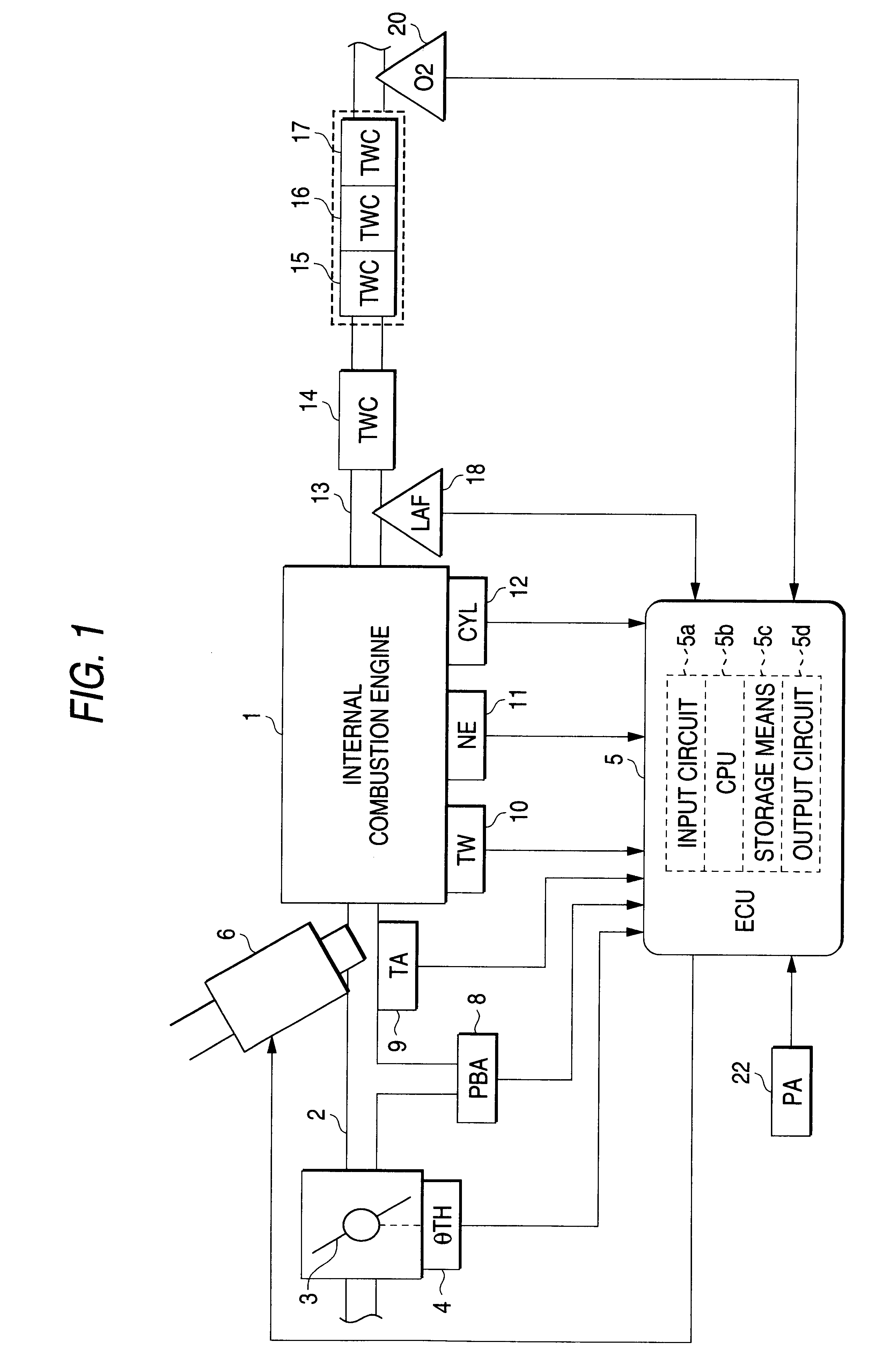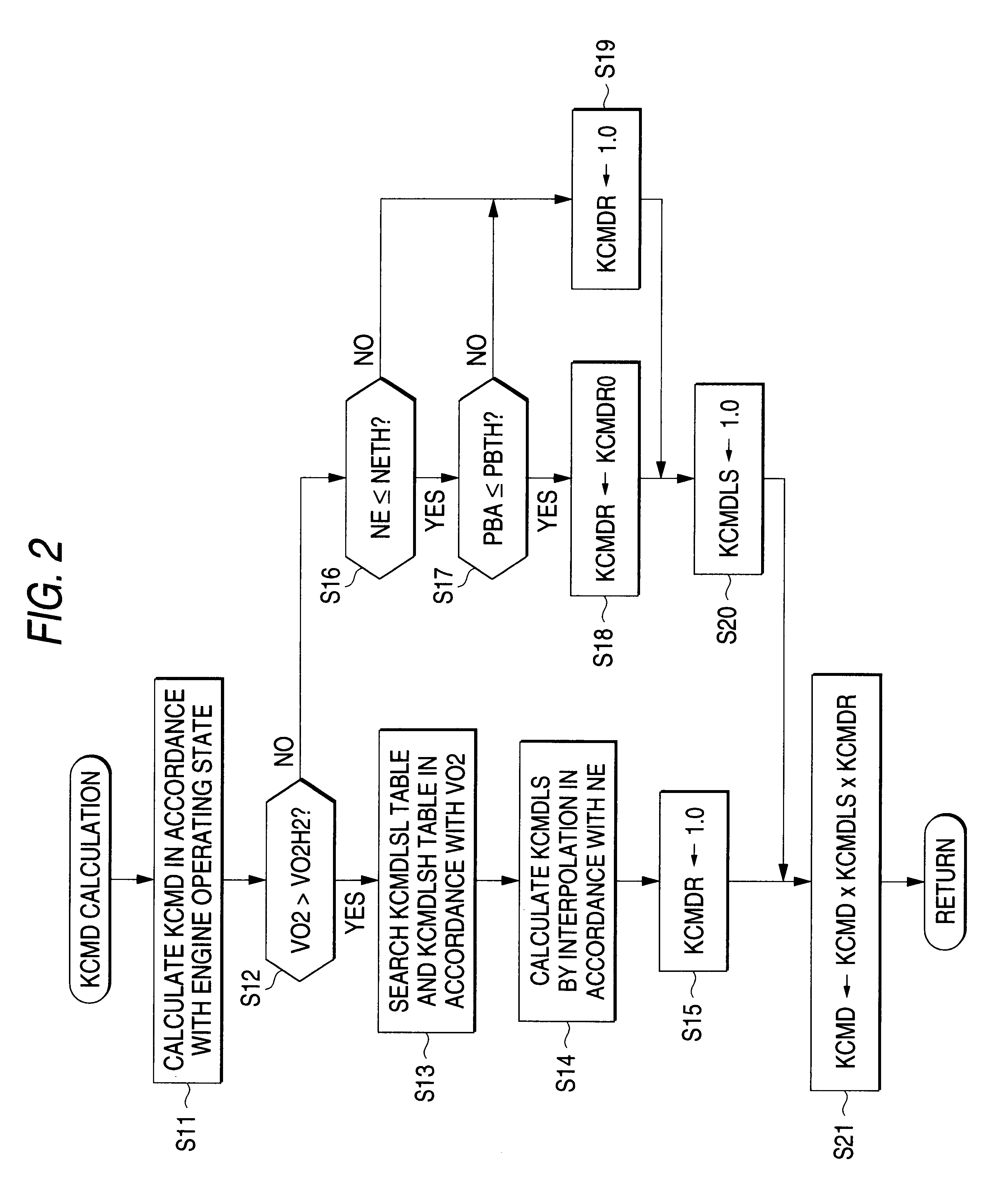Exhaust gas purifying apparatus for internal combustion engine
a technology of exhaust gas purification apparatus and internal combustion engine, which is applied in mechanical equipment, electrical control, machines/engines, etc., can solve the problems of insufficient change in the output of oxygen concentration sensor, inability to carry out conventional sub-feedback control, and deterioration of the precision provided by sub-feedback control
- Summary
- Abstract
- Description
- Claims
- Application Information
AI Technical Summary
Benefits of technology
Problems solved by technology
Method used
Image
Examples
Embodiment Construction
The preferred embodiment of the present invention will now be described while referring to the accompanying drawings.
FIG. 1 is a diagram showing the general configuration of an internal combustion engine (hereinafter referred to as an engine) and an exhaust gas purifying apparatus according to the embodiment of the present invention. A throttle valve 3 is located along an intake pipe 2 of an engine 1 of, for example, four cylinders. A throttle valve opening (.theta.TH) sensor 4 is connected to the throttle valve 3. In accordance with the opening of the throttle valve 3, the throttle valve opening sensor 4 outputs an electric signal to an electronic control unit (hereinafter referred to as an ECU) 5 for controlling the engine 1.
For each cylinder, a fuel injection value 6 is located between the engine 1 and the throttle valve 3, and slightly upstream of an intake valve (not shown) in the intake pipe 2. Each fuel injection valve 6 is connected to a fuel pump (not shown) and is electric...
PUM
 Login to View More
Login to View More Abstract
Description
Claims
Application Information
 Login to View More
Login to View More - R&D
- Intellectual Property
- Life Sciences
- Materials
- Tech Scout
- Unparalleled Data Quality
- Higher Quality Content
- 60% Fewer Hallucinations
Browse by: Latest US Patents, China's latest patents, Technical Efficacy Thesaurus, Application Domain, Technology Topic, Popular Technical Reports.
© 2025 PatSnap. All rights reserved.Legal|Privacy policy|Modern Slavery Act Transparency Statement|Sitemap|About US| Contact US: help@patsnap.com



